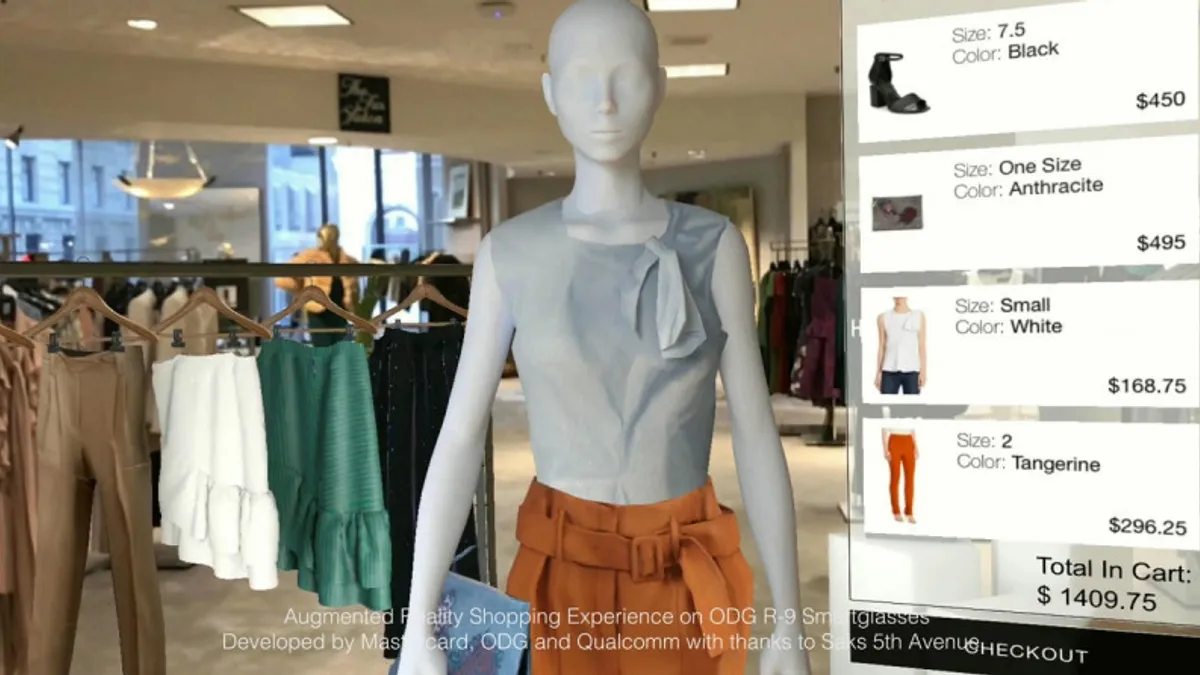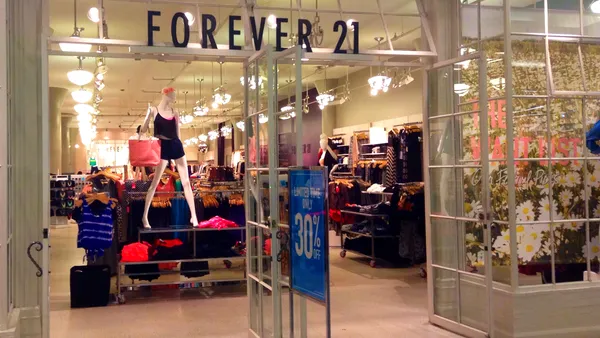Dive Brief:
-
Mastercard, working with Saks Fifth Avenue, Qualcomm and Osterhout Design Group, this week showcased an augmented reality shopping experience that allows users to pay using it Masterpass platform with authentications via eye-scanning, the company announced at the Money 20/20 event in Las Vegas.
-
Using the experience, a Saks shopper could wear AR-enabled glasses to view clothing on a rack in-store, select items to buy, receive recommendations about related clothing or accessories and access more information about merchandise.
-
The payments giant did not say when the technology will be broadly available at Saks stores or through other retailers, and also has not responded to Retail Dive’s request for comment. However, TechRepublic reported that a pilot program involving Saks may happen next year.
Dive Insight:
Last month, a huge wave of AR mobile apps entered the retail market as retailers sought to use Apple's ARkit to bring new value to their mobile apps. Some of those apps actually can be used while shoppers are in stores, but this demonstration is a reminder that there are a lot of ways AR technology can be used in a retail context.
Mastercard appears to have been the driving force behind the announcement, video and technology demonstration, though the key technologies are being supplied by other companies. Osterhout is providing the AR technology and its R-9 smart glasses, while Qualcomm is providing its Snapdragon 835 Mobile Platform running the Snapdragon XR SDK and iris-scanning technology.
Mastercard is also contributing Masterpass and Identity Check Mobile, which the company announced a little over a year ago, which enable users making purchases to authenticate with physical traits including fingerprint, facial and voice recognition software.
Meanwhile, seeing Saks in this video seems like an enticing hint that consumers will be able to shop this way at a Saks store sometime soon, but no mention was made of that in the Mastercard announcement. The demo, the Mastercard statement reads, "leverages the Saks Fifth Avenue brand, marks and likeness to showcase the shopping environment." That's as much as we get on Saks' involvement for now.
In any case, AR technology is nothing new, but this may be a different approach to using it for retail than we have seen so far. It's fair to wonder how this would work on a regular basis in a retail environment — if customers would have to ask for the smart glasses, or be pitched to try them by store associates. Also, how many pairs of smart glasses would one store have? This was just a demonstration, of course — but there's a lot these companies need to sort out before this tech hits the stores.
Eye-scanning technology also isn't new, though it has not been widely used in retail as of yet. Mastercard has been edging in this direction for a while, and Alibaba last year acquired a company that specializes in it.
Above all, this demonstration uses these technologies to show the future of frictionless shopping. However, customers need to buy in for an approach like this to succeed, and there is some question as to how ready they are for either AR or biometric payment authentication. A recent National Retail Federation study suggested not many consumers have tried AR or are even aware of it, while a Paysafe study showed that some consumers are wary of biometric approaches.













